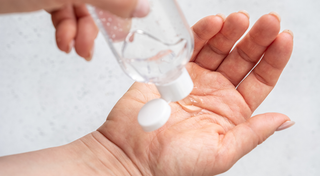Why do I need hand sanitiser?
A: The World Health Organisation states that the number one way to prevent the spread of germs is by hand washing. Unfortunately, this is not always convenient when you’re out and about. Sanitiser does not replace hand washing. It is effective as a supplement that kills germs and bacteria.
Since the Coronavirus outbreak it seems hand sanitiser is everywhere. These can vary from backyard remedies right through to product costing as much as the whisky these very manufacturers previously made.
There are huge variations in quality within the market. Questionable efficacy claims along with mysterious ingredients plague the market, making an informed choice difficult.
We have all used the product generously made available in many retail stores. Unfortunately they are often diluted, have an overwhelming smell and are harsh to the skin.
What is hand sanitiser?
A: Hand sanitiser is a liquid formulation that quickly kills, neutralises, or inhibits the growth of germs on physically clean hands, with the aim of avoiding transmission of germs. Unlike soap, which cleans dirty hands and requires water to lather and then rinse off, hand sanitisers do not require water and can simply be left on the hands.
Sanitiser relies on alcohol to kill germs by disrupting the viral coat protein, effectively cracking open the virus and spilling its DNA contents rendering them inert. The target number is 70% by volume but the delivery of this to the skin differs enormously.
In a diffuser spray, over 50% of the (VOC) alcohol is burned off as soon as the product hits the atmosphere rendering the efficacy of the product negligible at best.
Watery sanitiser splashes off your hands meaning you can’t spread it evenly. This feels effective but in truth much of the useful germ killing properties end up on the floor.
Australia has been flooded in recent weeks with cheap sanitiser from overseas as many scramble for market share.
The primary ingredient in an effective sanitiser is made up of at minimum, 70% ethanol. Given how important ethanol is to killing germs, let’s now take a closer look at it.
Ethonol is, chemically speaking, a pretty basic liquid in that it’s makeup is not very complex. During the manufacturing process the distillation process can be see ‘fillers’ added to increase the yield of the final product. This of course lowers the purity of the resulting ethanol. Fewer fillers and a longer distillation process results in a higher quality ethanol which like all high quality things in life costs more than low quality product.
Generally, medical and or laboratory grade alcohols, have not been prepared with human consumption as a consideration, but with primary regard to their use as a chemical reagent. To this end, food grade alcohol contains more fillers/ additives than medical grade ethanol.

Tell me about Huxter’s Hand Sanitiser
A: We use high end medical grade ethanol in our sanitiser as well as our signature lemongrass fragrance.
We use a gelling agent which stops the sanitiser running off your hands and onto the floor, and is therefore much more effective.
As alcohol is a solvent, it strips away oils that are important for water retention, and dries out the skin when it evaporates. This drying effect causes chapping of the skin, creating cracks and crevices where germs may become trapped or hidden. To reduce this drying effect we add PENTAVITIN® to our sanitiser which is a plant extract that provides powerful hydration back to the skin once the ethanol has evaporated.



